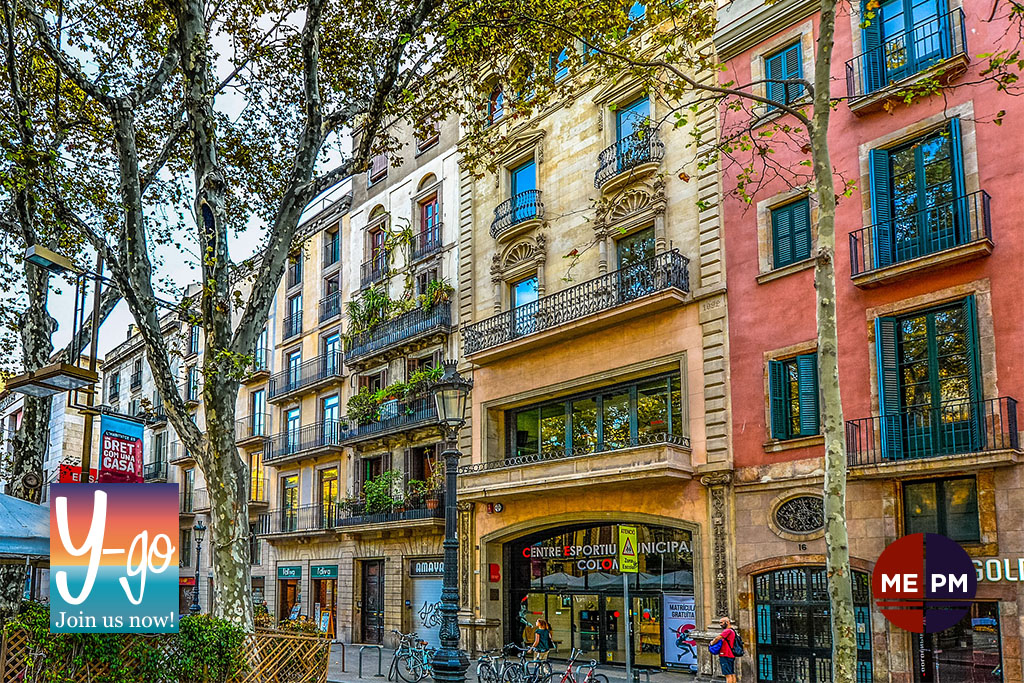The Essential Things to Know Before You Visit Barcelona
By SARA MCCARTY, CONTEXT TRAVEL and CNT EDITORS
Barcelona is Europe’s third most-visited city—a record 32 million people turned up last year—but it is also notably conflicted about tourism. In 2017, Ada Colau, Barcelona’s mayor, raised the tourist tax and approved a law that is supposed to restrict visitors by limiting the number of beds available in hotels and tightly licensing apartment rentals.
With that in mind, it’s a place where outsiders might do well to stay under the radar, or at least to act in ways that respect local custom and don’t draw negative attention. And with the question of Catalonian independence on the front burner—the region is in the midst of deciding whether it should break up with Spain—it’s best to avoid sensitive topics and instead just enjoy the city’s amazing architecture (from Gothic-era city centers to Gaudís), art (Picasso and Miró), and its century-old pinxtos bars and sun-splashed seaside cafés.
How to Greet Someone
Friends and family will kiss each other hello and goodbye, but don’t greet a stranger this way; rather, a simple hola will suffice for acknowledging others like shopkeepers. According to Anne Jordan, Context culinary docent and Barcelona local, Catalans don’t always bother with elaborately polite phrases, though a gràcies (thank you) is always appreciated. You will likely hear Catalan spoken everywhere, but if all you are working with is some rusty (Castilian) Spanish, you will be understood.
Words to Know
That said, basic niceties spoken in Catalan, rather than Spanish, will be better received. In addition to hola and gràcies, bon día (good morning), si us plau (please), merci (thanks), and molt bó (very good, as in food) will be useful.
What to Wear
Barcelona is more casual than cities like Milan or Paris, but you should still dress smartly. For cold-weather travel, pack scarves, blazers, and ankle boots. It goes without saying that you should avoid fanny packs and other items that scream tourist—doing so will make you less of a target for the city’s pickpockets, who are abundant in certain areas (like Las Ramblas). And ditch the high heels, which will not do well on the city’s many old cobblestone streets.
In the warmer months, absolutely do not wear a bathing suit or flip-flops off the beach. Doing so will pretty much immediately identify you as an out-of-towner. Even shorts off the beach are a rare site, though this is starting to change among the city’s younger, style-conscious residents.
Where (Not) to Hang Out
Speaking of beaches, it’s worth noting that most locals do not spend their time on Barcelona’s municipal beaches. Nor do locals spend time on Las Ramblas, which is like the Champs Elysées of Barcelona. For some peace and local quiet, head instead to a residential neighborhood like Gràcia for its great squares, food markets and restaurants, or to Poblenou for brunch. If it's sun and sand you’re looking for, head outside of the city to Ocata or Montgat for a day on the Mediterranean.
How to Get Around
Barcelona is a great walking city, and neighborhoods like the Barri Gòtic and the Raval are best explored on foot. That said, the city does have an extensive public transportation system, including eight metro lines—identified by color—an urban rail network, or FGC, and two tram lines. There are various passes you can buy that are valid on transfers among all of these, including the T-10 card, which works for ten trips, or day passes (2, 3, 4, and 5 days). We recommend the Hola Barcelonacard, which offers unlimited rides for 48, 72, 96, or 120 hours on metro, FGC, and buses. Note that the metro and FGC close at midnight on weekdays, though they run all night on Friday and Saturdays.
What to Eat
Many traveling to Spain think of paella, a rice dish often mixed with shellfish; however, paella is actually traditional to neighboring Valencia. (And if you do order it, do so only at lunch, which is customary—not dinner!) If you want to taste something with more of a Catalan flavor, order a local dish like esqueixada, a simple salad of hand-shredded salt cod, tomatoes, onions, olive oil, vinegar, and salt. It is customarily served in summer. Like the rest of Spain, Catalans typically eat on the later side. Plan to have lunch around 2 p.m. and dinner around 10 p.m.
Finally, it can’t hurt to know your coffee lingo: cortado (short), copa (regular cup) and jara (large). Cortado is the most authentic—even if you need to have four of them to wake up.
Local Etiquette
Don’t talk politics. Given the considerable tension over the question of Catalan independence right now, and the fact that public opinion is split right down the middle (even many families are divided!), outsiders would do well not to share their opinions. So in this particular case, it's better to simply be a tourist.
Do bring your own bags to shop in the market or supermarket.
Don’t have tapas for dinner. Tapas are generally meant to be a pre-meal snack.
Don’t show up for dinner before 9 p.m.
Don’t wear a Barça jersey except on a day where there's a game (unless if you’re under ten years old).
Don’t say “gin and tonic.” While the cocktail is a local favorite, it's simply "gin tonic."
Don’t ask about bullfighting. It's not a thing in Catalonia.
This article was originally published in 2014. It has been updated with new information
